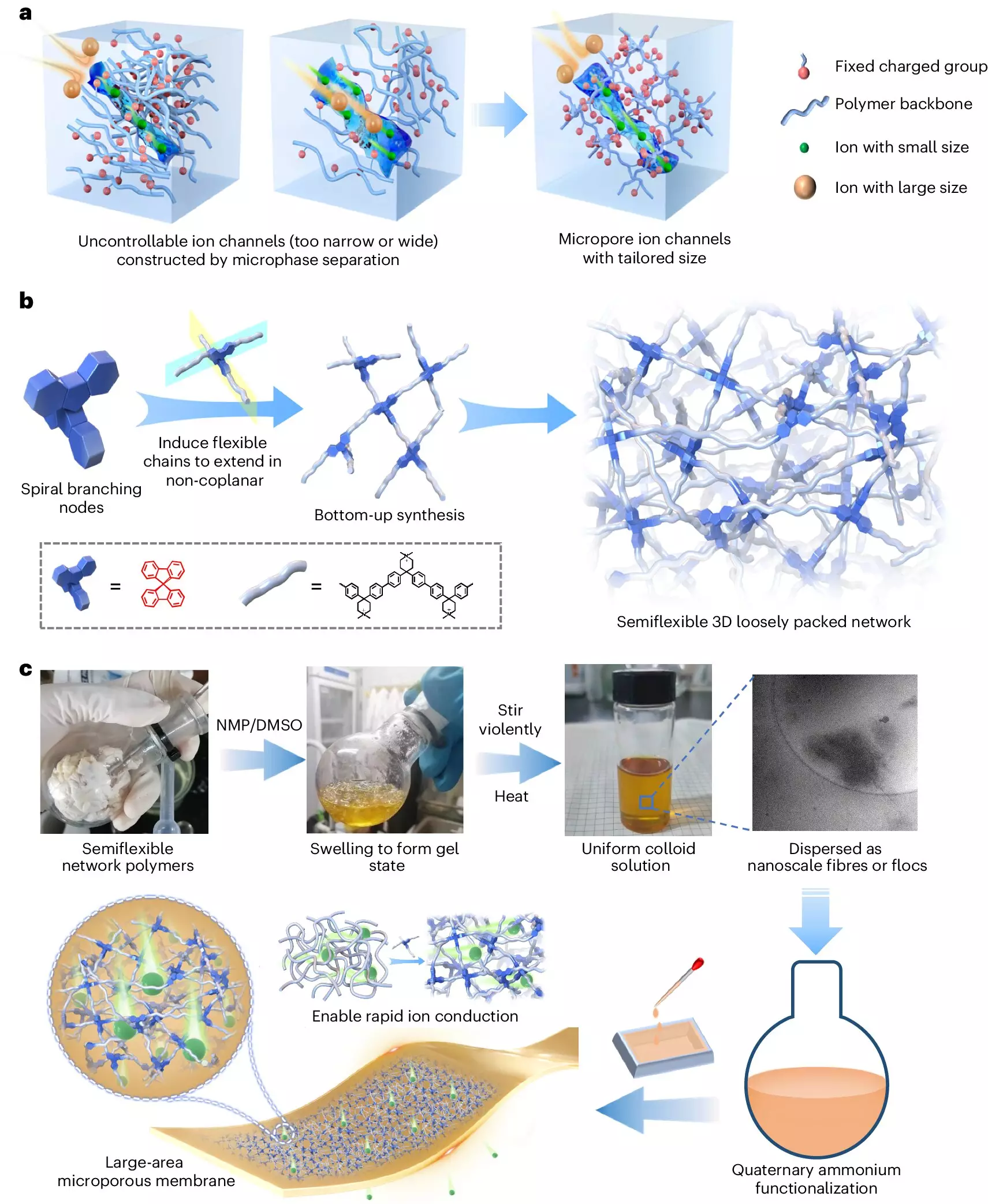In a recent study published in Nature Sustainability, a team of researchers led by Prof. Xu Tongwen and Ge Xiaolin from the University of Science and Technology of China (USTC) achieved a groundbreaking development in the field of anion exchange membranes (AEMs). The innovative approach they took in designing a spiro-branched polymeric membrane has shown remarkable performance in flow battery applications, opening up new possibilities for various energy storage systems.
Traditional methods of developing AEMs have faced challenges in balancing ion conductivity, selectivity, and stability. Microphase separation has been the primary approach, but it often results in tradeoffs that restrict overall membrane performance. The need for more efficient and reliable ion conduction has been crucial for the advancement of applications such as chemical separations, CO2 conversion, and water electrolysis.
To overcome these challenges, the research team devised a new spiro-branched polymeric membrane using stereotwisted spiro scaffolds and poly(aryl piperidinium) with an all-carbon backbone. By creating a unique spiro-branched structure that combines the rigidity of spiro units with the flexibility of branched chains, the team aimed to enhance the free volume within the polymer. This structural configuration was designed to facilitate efficient ion transport pathways, a critical aspect for improving membrane performance.
The researchers conducted thorough structural characterization using scanning electron microscopy (SEM) and transmission electron microscopy (TEM), as well as porosity measurements. The analysis revealed a semi-flexible 3D loosely packed network within the membrane, resulting in highly connected sub-nanometer ion channels. This structural design led to exceptional anion conductivity, with chloride ion conductivities exceeding 60 mS cm-1 at 30°C and up to 120 mS cm-1 at 80°C. Moreover, in flow battery applications, these membranes exhibited superior power density and energy efficiency, enabling rapid charge and discharge cycles at a high current density of 400 mA cm-2.
The development of this spiro-branched polymeric membrane represents a significant breakthrough in membrane material design. Its superior performance in flow battery applications and excellent chemical stability in vanadium redox flow batteries indicate its potential for long-term use in energy storage systems. This innovation not only advances the field of polymer science but also contributes to the development of more efficient and sustainable energy storage technologies, addressing critical energy and environmental challenges.


Leave a Reply